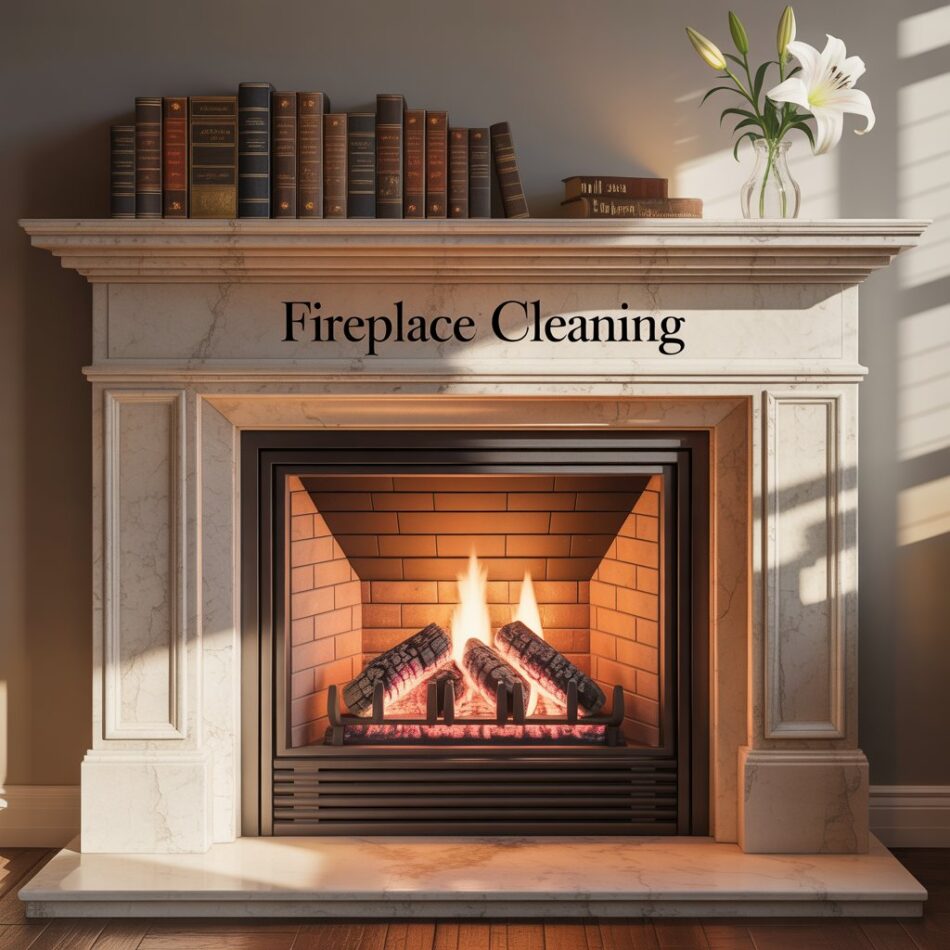When the weather cools down, many people turn to their fireplaces for warmth and comfort. But before lighting that first fire of the season, it’s smart to think about maintenance. Two terms that often get thrown around are Fireplace Cleaning and chimney sweeping. They might sound the same, but they’re actually two different services, and knowing the difference can help you save money, keep your home safe, and extend the life of your fireplace system.
Fireplace Cleaning: The Basics
Fireplace cleaning focuses on the visible parts of your fireplace the firebox, hearth, and surrounding area. Think of it as a tidy-up job for the area where the fire burns. This service usually involves removing ash, soot, debris, and any buildup that’s visible from inside your living space.
Key features of fireplace cleaning include:
- Removing ash and leftover wood from the firebox
- Wiping down soot from walls and glass doors
- Cleaning the hearth and surrounding area for a polished look
- Checking for small cracks or damage inside the firebox
Average cost: Most homeowners spend between $80 to $150 for a standard fireplace cleaning.
Safety note: Fireplace cleaning alone won’t address deeper safety risks, like creosote buildup in the chimney flue. It’s mostly about cleanliness and appearance, though a good technician may also notice early signs of damage.
Chimney Sweeping: A Deeper Dive
Chimney sweeping goes far beyond surface cleaning. This service focuses on the Chimney Flue Liner the passageway that carries smoke and gases safely out of your home. Over time, burning wood creates a sticky residue called creosote, which can ignite and cause chimney fires if left untreated. Sweeping removes this dangerous buildup, along with soot and blockages like leaves, bird nests, or other debris.
Key features of chimney sweeping include:
- Scraping and brushing the flue walls to remove creosote
- Clearing out blockages to improve airflow
- Checking the damper and smoke chamber for issues
- Inspecting the chimney lining for cracks or damage
Average cost: Chimney sweeping usually ranges from $120 to $300, depending on the height of the chimney, accessibility, and level of buildup.
Safety note: Chimney sweeping is essential for preventing dangerous chimney fires and carbon monoxide leaks. Skipping it for too long can put your home and family at serious risk.
Fireplace Cleaning vs. Chimney Sweeping: Quick Comparison
Here’s a simple breakdown of how these two services stack up side by side:
| Feature | Fireplace Cleaning | Chimney Sweeping |
| Focus Area | Firebox, hearth, glass | Chimney flue, damper, lining |
| Main Purpose | Clean appearance | Fire safety & airflow |
| Average Cost | $80 – $150 | $120 – $300 |
| Frequency | As needed or every few uses | At least once a year |
| Key Safety Benefit | Spotting small damage early | Preventing chimney fires |
Why Both Services Matter
You don’t have to choose between fireplace cleaning and chimney sweeping both play important roles in maintaining your system. A fireplace that looks spotless can still hide a dangerous chimney full of creosote. On the flip side, a clean chimney doesn’t keep your living room free from ash, soot, and odors.
As the National Fire Protection Association recommends:
“Chimneys, fireplaces, and vents should be inspected at least once a year for soundness, freedom from deposits, and clearance.”
This means scheduling an annual sweep while also keeping up with regular fireplace cleaning is the safest route.
Cost, Safety, and Peace of Mind
Some homeowners try to skip professional services by doing light cleaning themselves, and that’s fine for ashes and glass doors. But chimney sweeping is a different story—it requires the right tools, experience, and safety measures. Paying a little more upfront can prevent costly fire damage or health hazards later.
Here’s why investing in both makes sense:
- Safety first: Chimney sweeping prevents chimney fires and carbon monoxide leaks.
- Efficiency: A clean system burns fuel more efficiently, saving you money on heating.
- Longevity: Regular upkeep extends the lifespan of your fireplace and chimney.
- Peace of mind: Knowing your system is safe allows you to enjoy your fire without worry.
FAQs
- How often should I schedule chimney sweeping?
At least once a year, preferably before the start of the burning season. If you use your fireplace heavily, you may need more frequent sweeps. - Can I clean my chimney myself?
Basic surface cleaning is possible, but sweeping the chimney flue should be left to certified professionals with the right equipment. - Do gas fireplaces need chimney sweeping?
Yes, though less often than wood-burning units. Gas fireplaces can still collect soot and debris that affect airflow. - What happens if I skip chimney maintenance?
Skipping maintenance can lead to creosote buildup, chimney fires, poor ventilation, and expensive repairs. - Is fireplace cleaning enough to keep my home safe?
No. Fireplace cleaning helps with appearance and minor upkeep, but chimney sweeping is essential for fire safety.
Conclusion
Fireplace cleaning and chimney sweeping might sound similar, but they serve very different purposes. Cleaning makes your fireplace look fresh and inviting, while sweeping protects your home from hidden dangers. Together, they form a complete maintenance routine that balances comfort, safety, and efficiency.
If you want a cozy fire without worry, make both services part of your yearly schedule. After all, the cost of prevention is far less than the cost of a fire.
Read More: Chimney Sweep Hamilton





